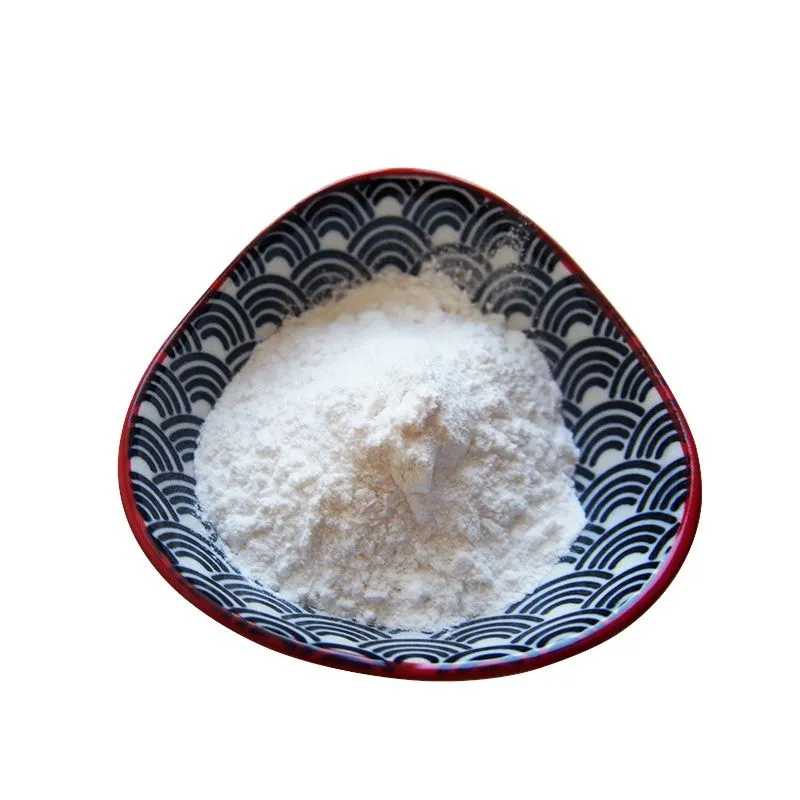While not as rich in oleanolic acid and oleanolic acid powder as some fruits and herbs, certain grains and legumes do contain this compound:
What foods are high in oleanolic acid?
Oleanolic acid, a naturally occurring triterpenoid compound, has garnered significant attention in recent years due to its potential health benefits. This powerful bioactive substance is found in various plants and has been the subject of numerous scientific studies. In this comprehensive guide, we'll explore the top natural sources of oleanolic acid, delve into its presence in fruits, herbs, and grains, and discuss how oleanolic acid powder can complement your diet.
Top Natural Sources of Oleanolic Acid
Oleanolic acid is abundantly present in nature, with certain plants containing higher concentrations than others. Let's explore some of the richest natural sources of this beneficial compound:
Olive Oil and Olive Leaves
Olive oil, a staple of the Mediterranean diet, is one of the most well-known sources of oleanolic acid. The compound is found in both the oil and the leaves of the olive tree (Olea europaea). Extra virgin olive oil, in particular, contains significant amounts of oleanolic acid, contributing to its numerous health benefits.
Jujube Fruit
Jujube, also known as Chinese date, is a fruit rich in oleanolic acid. This sweet and nutritious fruit has been used in traditional Chinese medicine for centuries. The oleanolic acid content in jujube contributes to its antioxidant and anti-inflammatory properties.
Clove
Clove, a popular spice derived from the flower buds of Syzygium aromaticum, is another excellent source of oleanolic acid and oleanolic acid powder. Besides its culinary uses, clove has been utilized in traditional medicine for its potential health-promoting effects, partly attributed to its oleanolic acid content.
Apple Peels
While the flesh of apples is nutritious, the peel contains a higher concentration of beneficial compounds, including oleanolic acid. This is why the old adage "an apple a day keeps the doctor away" holds some truth, especially when consuming the fruit with its skin intact.
Garlic
Garlic, renowned for its pungent flavor and potential health benefits, also contains oleanolic acid. This compound, along with other bioactive substances in garlic, contributes to its antioxidant and anti-inflammatory properties.
Oleanolic Acid in Fruits, Herbs, and Grains
Beyond the top sources mentioned above, oleanolic acid can be found in a variety of fruits, herbs, and grains. Let's explore some of these diverse sources:
Fruits Rich in Oleanolic Acid
Several fruits contain notable amounts of oleanolic acid:
- Grapes: Both the fruit and the leaves of grapevines contain oleanolic acid. Red grape varieties tend to have higher concentrations.
- Pomegranate: This antioxidant-rich fruit contains oleanolic acid in its peel and seeds.
- Persimmon: The Japanese persimmon, in particular, has been found to contain oleanolic acid.
- Loquat: This small, sweet fruit native to China contains oleanolic acid in its leaves and fruit.
Herbs Containing Oleanolic Acid
Many herbs used in traditional medicine and culinary applications contain oleanolic acid:
- Rosemary: This aromatic herb is a good source of oleanolic acid and other beneficial compounds.
- Sage: Various species of sage contain oleanolic acid, contributing to their potential medicinal properties.
- Lavender: Besides its calming aroma, lavender contains oleanolic acid in its leaves and flowers.
- Oregano: This popular culinary herb is another source of oleanolic acid.
Grains and Legumes with Oleanolic Acid
- Millet: This ancient grain contains small amounts of oleanolic acid.
- Lentils: These protein-rich legumes have been found to contain trace amounts of oleanolic acid.
- Buckwheat: Despite its name, buckwheat is not related to wheat and contains some oleanolic acid.
Other Plant Sources
Several other plants contain oleanolic acid in varying amounts:
- Ginseng: Both Asian and American ginseng contain oleanolic acid, contributing to their adaptogenic properties.
- Holy Basil (Tulsi): This revered herb in Ayurvedic medicine contains oleanolic acid in its leaves.
- Eucalyptus: The leaves of various eucalyptus species contain oleanolic acid.
- Hawthorn: Both the berries and leaves of hawthorn contain oleanolic acid.
How Oleanolic Acid Powder Complements Your Diet?
While incorporating oleanolic acid-rich foods into your diet is beneficial, oleanolic acid powder offers a concentrated and convenient way to supplement your intake. Here's how oleanolic acid powder can complement your diet and potentially enhance your overall health:
Concentrated Source of Oleanolic Acid
Oleanolic acid powder provides a highly concentrated form of this beneficial compound. While natural food sources contain varying amounts of oleanolic acid, the powder form allows for precise dosing and ensures a consistent intake. This can be particularly useful for individuals looking to maximize the potential benefits of oleanolic acid.
Versatility in Use
Oleanolic acid powder can be easily incorporated into your daily routine. It can be added to smoothies, mixed into beverages, or used in homemade supplements. This versatility makes it simple to boost your oleanolic acid intake without significantly altering your diet.
Potential Health Benefits
Supplementing with oleanolic acid powder may offer several potential health benefits:
- Antioxidant Support: Oleanolic acid has demonstrated potent antioxidant properties, which may help protect cells from oxidative stress and support overall health.
- Liver Health: Some studies suggest that oleanolic acid may have hepatoprotective effects, potentially supporting liver function and health.
- Anti-Inflammatory Properties: Oleanolic acid has shown anti-inflammatory effects in various studies, which could contribute to overall wellness.
- Metabolic Health: Research indicates that oleanolic acid may have beneficial effects on glucose and lipid metabolism, potentially supporting metabolic health.
Complementing a Balanced Diet
While oleanolic acid powder can be a valuable addition to your wellness routine, it's important to view it as a complement to, rather than a replacement for, a balanced diet. Consuming a variety of oleanolic acid-rich foods alongside the powder can provide a synergistic effect, as these foods contain other beneficial compounds that work in concert with oleanolic acid.
Considerations When Using Oleanolic Acid Powder
When incorporating oleanolic acid powder into your diet, keep the following points in mind:
- Quality Matters: Choose a high-quality oleanolic acid powder from a reputable source to ensure purity and potency.
- Dosage: Follow recommended dosage guidelines or consult with a healthcare professional to determine the appropriate amount for your individual needs.
- Potential Interactions: If you're taking medications or have pre-existing health conditions, it's advisable to consult with a healthcare provider before adding oleanolic acid powder to your regimen.
- Balanced Approach: Remember that oleanolic acid powder should be part of a holistic approach to health, including a balanced diet, regular exercise, and other healthy lifestyle practices.
Integrating Oleanolic Acid Powder into Your Wellness Routine
To make the most of oleanolic acid powder, consider the following tips:
- Consistency is Key: For optimal results, incorporate oleanolic acid powder into your daily routine consistently.
- Pair with Healthy Fats: Since oleanolic acid is fat-soluble, consuming it with a source of healthy fats may enhance absorption.
- Combine with Antioxidant-Rich Foods: Pairing oleanolic acid powder with foods high in antioxidants may provide synergistic benefits.
- Monitor Your Response: Pay attention to how your body responds to oleanolic acid supplementation and adjust as needed.
Conclusion
Oleanolic acid is a remarkable compound found in various natural sources, offering potential health benefits that have piqued the interest of researchers and health enthusiasts alike. From the Mediterranean staple of olive oil to the exotic jujube fruit, nature provides us with an array of options to incorporate this beneficial substance into our diets.
While consuming oleanolic acid-rich foods is an excellent way to reap its potential benefits, oleanolic acid powder offers a concentrated and convenient alternative. By combining natural food sources with high-quality oleanolic acid powder, you can create a comprehensive approach to harnessing the power of this bioactive compound.
For more information about oleanolic acid powder and its potential benefits, or to explore our range of high-quality plant extracts, please don't hesitate to contact us at emily@jiubaiyuanbiotech.com. Our team of experts is always ready to assist you in your journey towards optimal health and wellness.

References
1. Pollier, J., & Goossens, A. (2012). Oleanolic acid. Phytochemistry, 77, 10-15.
2. Jäger, S., Trojan, H., Kopp, T., Laszczyk, M. N., & Scheffler, A. (2009). Pentacyclic triterpene distribution in various plants–rich sources for a new group of multi-potent plant extracts. Molecules, 14(6), 2016-2031.
3. Castellano, J. M., Guinda, A., Delgado, T., Rada, M., & Cayuela, J. A. (2013). Biochemical basis of the antidiabetic activity of oleanolic acid and related pentacyclic triterpenes. Diabetes, 62(6), 1791-1799.
4. Luo, Y., Liu, Z., Chen, Y., & Chen, Y. (2020). Oleanolic acid in Olea europaea L.: A review on its anti-inflammatory, antioxidant, and immunomodulatory effects. Journal of Functional Foods, 68, 103920.
5. Wang, X., Ye, K., Liu, F., Liu, X., Cui, C., & Chen, Y. (2015). Synthesis and biological evaluation of oleanolic acid derivatives as novel inhibitors of protein tyrosine phosphatase 1B. Chemical Biology & Drug Design, 86(5), 1087-1100.
